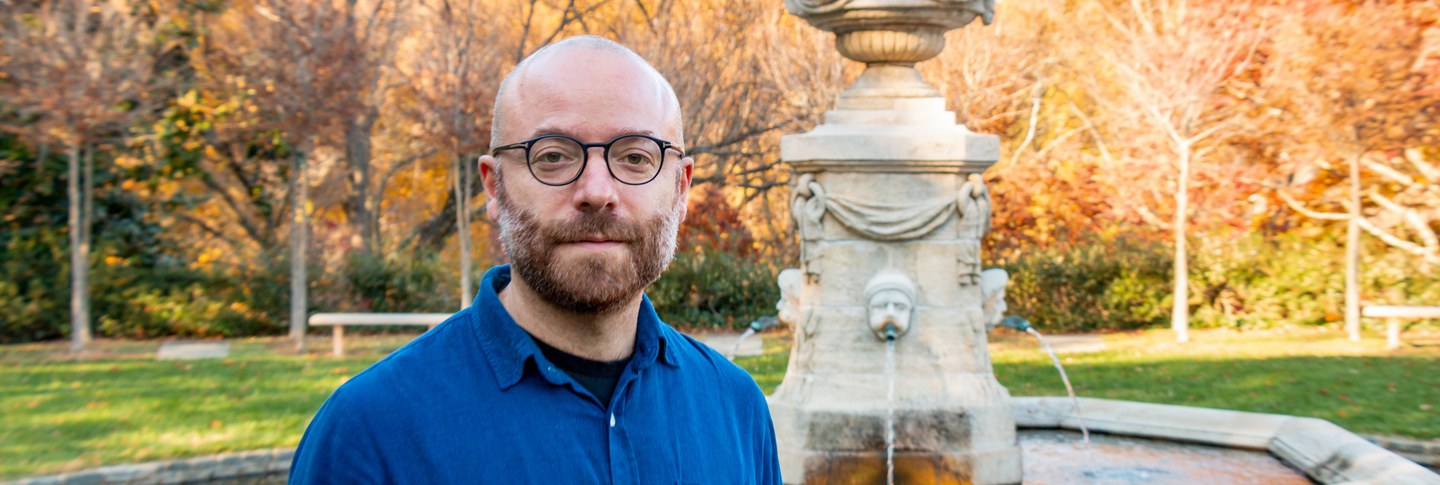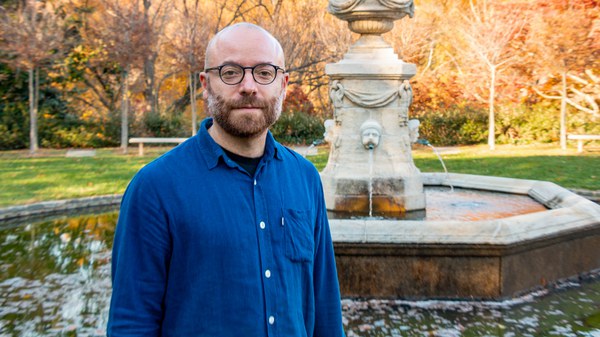Rodrigo Booth, associate professor in architecture at the Universidad de Chile, was a fellow in Garden and Landscape Studies in spring 2022. His research report, “Ideas of Nature and Landscape in Gulumapu and Southern Chile during the Nineteenth Century,” explored the aesthetic and national ideals of underpinning the displacement of Mapuche people and colonization of Patagonia.
Q&A with Rodrigo Booth
What is the Gulumapu region, and who are the Mapuche people?
Gulumapu is the word that the Indigenous Mapuche people of southern Chile and Argentina called the west side of their ancestral land, a region today referred to as Araucania in northern Patagonia. I am researching how the Mapuche people understand their landscape and their ideas of nature, which are completely different from Western ideas of the country or landscape. Human beings are conceived by the Mapuche as part of the landscape—“Mapuche” means “people of the land.” The Mapuche conceive of their world in very close connection with their land, and natural elements like a forest tree or a volcano or a river have spirits, which is in stark contrast with the Western scientific view that understands nature and landscape as an object separate from human beings.
What ideals were projected onto the landscape as it was being colonized?
Europeans arrived in the region in the mid-nineteenth century and brought a new aesthetic understanding of nature and landscape. This aesthetic view came first with the European scientists and later with Chilean and German settlers and centered on the ideas of the sublime and beauty. As theorized by Europeans in the nineteenth century, the sublime related to ideas of terror and death and showed the smallness of human beings as compared to the magnificence of nature. Beauty related to ideas of peace and life and love, epitomized by a person at peace in a prairie.
Europeans also introduced the idea of private land, which changed the landscape [physically. The Mapuche lost all their land, which was divided by the Chilean state and sold or given to settlers. The Mapuche were relocated into much smaller parcels of farmland, called reducciones, and reduced to small farming communities separated from their traditional land. Today, the Mapuche people are still segregated from their ancestral lands, and their traditional lands have been commodified and are without their traditional inhabitants
How does this history relate to our modern understanding of the region?
The process of land occupation in the nineteenth century and first decade of the twentieth century helped construct the idea of national landscapes, especially national parks. The first national parks in Chile were created during the 1910s. John Muir, the American conservationist, even visited the region in 1912, probably to promote ideas of conservation. Muir’s ideas of conservation of nature didn’t include original ways of life in the area nor the Indigenous people who lived there. Interestingly, his diaries from the trip say nothing about Mapuche people, yet it would have been absolutely necessary for him to be in contact with them to access the areas he was visiting. The first national park in Argentina was created a little over twenty years after Muir’s visit.
The creation of national parks turned the landscape into a tourist attraction. The landscape became a product that you could see and sell in a tourist guide; half the attractions in mid-twentieth century tourist guides were located in this area because of their aesthetic appeal. The region has been the main touristic landscape in Chile since the 1920s and 30s. These landscapes were promoted by the state to create a national landscape and were crucial in creating the idea of the Chilean nation.
It has been very interesting to have discussions with my colleagues in Garden and Landscape Studies, but also discussions with fellows in Pre-Columbian Studies who are also thinking about nature, landscapes, and Indigenous people, like [Senior Fellow] Tom Dillehay, an archaeologist who works in the Mapuche area. We all have different points of view to understand the same object—the landscape—coming from varying historical, archaeological, ecological, or anthropological points of view.
May Wang is postgraduate writing and reporting fellow. Photo by Emily Orr, 2021–2022 humanities fellow.

